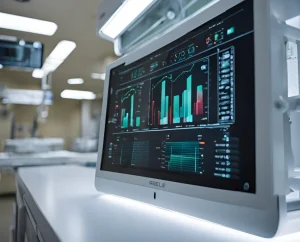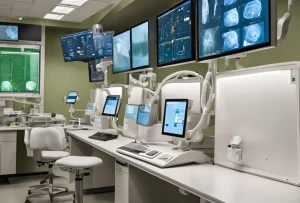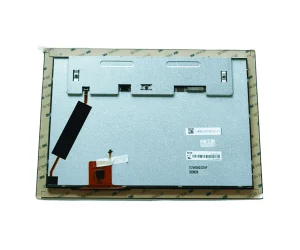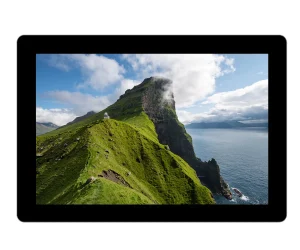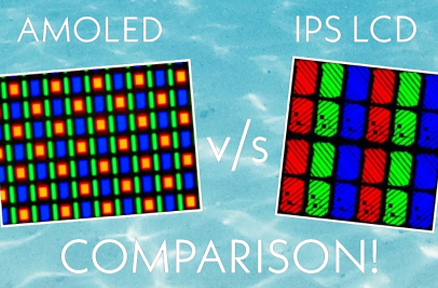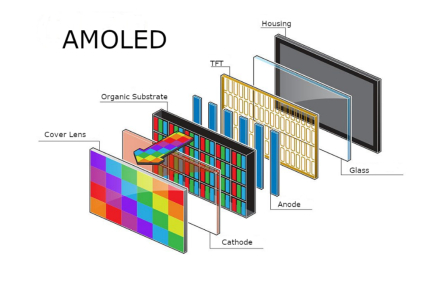In the changing tides of modern healthcare, technology is increasingly being seen as a motivating factor that facilitates better patient care and efficiency in medical work. Amongst all the developments, custom medical display touchscreens have started to emerge: strongly serving not only the medical practitioners but also heightening the services provided to the patients. This article looks at how custom touchscreen displays are changing the status quo and amplifying a facility’s efforts toward smarter, more efficient care.
The Critical Role of Touchscreens in Modern Healthcare
The broad use of touchscreens in everyday surroundings in phones, tablets, and so on makes them intuitive-usable in medicine, where they stop being a matter of comfort and start playing a very serious role as primary interfaces for some devices and systems. They act both as visual interfaces, visualizing key data on the patient or system status, and input devices by which healthcare professionals interact with medical equipment. In this case, they are used dually, turning them into invaluable means for effectively carrying out medical processes without errors.
Applications of Medical Touchscreens
Touchscreens in healthcare find their applications in almost all aspects of patient care, monitoring, and diagnosis. Their common applications include:
Monitoring Systems: Touchscreen displays form an integral part of heart rate monitors, blood pressure monitors, and infusion pumps, amongst others, offering immediate access to real-time patient data.
Diagnostic Equipment: From ultrasound machines to MRI and X-ray scanners, touchscreens allow medical personnel to review and interact with medical imagery.
Handheld Medical Devices: Portable ultrasound devices, glucose monitors, and other mobile diagnostic instruments have been made easy to use with touchscreens for efficient use and data entry.
Ventilators: Touchscreen LCD displays play a vital role in ventilator machines, which should display accurate patient vital readings, settings, and be easily cleanable.
Smart Refrigerators: It also finds a place in medical-grade refrigeration that will handle inventory and temperature settings using touchscreens.
Smart Home Integration: Touchscreens also act as interfaces for environmental controls and communications in some healthcare facilities.
Advantages of Custom Medical Touchscreen Displays
Even though off-the-shelf touchscreens may be useful, a custom medical display offers targeted solutions to the needs presented by the healthcare industry. Some of the advantages include:
Improved Accuracy and Efficiency
Industrial touch displays come with increased accuracy in data entry, which is important for inventory tracking and management of patient information. By allowing workers to input data directly through a touch interface, the likelihood of errors significantly decreases, thus improving efficiency. This smooths out workflows, eliminates manual data transfer, and reduces the chances of errors, saving precious time and resources.
Improved User Experience
Touchscreen interfaces are use-friendly, and their usability factor is constantly improving; thus, medical personnel can have immediate access to assess records, go through medical imagery, or adjust settings accordingly. Patients will also be able to interact with the touch monitors while performing self-check-in, have access to educational materials, and securely communicate with medical professionals. This will enrich the patient experience.
Improved Hygiene and Safety
It’s much easier to clean the display than other keyboard and mouse applications; they tend to absorb dirt and germs quite well. For that, touch panels can simply be wiped down with sanitary solutions. As an example, Kadi Display’s 12.1inch 1280*800 IPS TFT LCD Display CTP has an anti-fingerprint treatment that provides the maximum degree of hygiene. Touch screens can also be designed to work with styluses or gloves, reducing the risk of bacterial transmission. Besides, some features, such as fluid detection, can lock the screen until it is cleaned to avoid accidental inputs.
Optimized Display Quality
High-quality displays are necessary in medical applications where clear visibility is required. To make them readable from all sides, manufacturers like Kadi Display use the In-Plane Switching technology, which has wide viewing angles, excellent contrast, and brightness. The Kadi Display touchscreens are also brightly lit at 1000 candelas and fit for medical applications. This will go a long way in enhancing contrast and visibility. Besides, anti-glare and antireflective coatings further enhance readability in brightly lit areas. Kadi Display provides customization regarding backlight, brightness, and thickness so that one may have a personalized display solution.
Long-term reliability and personalization
Due to the importance of long-term support and availability, usually industrial-grade displays should be selected for medical devices. As an example, Kadi Display has provided custom solutions for two decades and offers customization services for pinouts, FPC, cables, housing, and cover glass. In addition, these displays also need to be able to resist strict cleaning procedures and harsh chemicals without affecting performance or longevity.
Key Considerations to Choose a Medical Touchscreen
Selection of the correct touchscreen for any medical device involves several key factors, including the following:
Display Size and Resolution: Depending on the amount of information that needs to be shown on the display, an appropriate size and resolution are chosen; hence, the range goes from small-sized displays in handheld devices to large displays for monitoring systems.
Brightness and Viewing Angles: High brightness, wide viewing angles (preferably with IPS technology) are needed for good readability in various lighting conditions.
Touch Technology: Specify whether multi-touch, glove compatible, or liquid-resistant will be needed. Capacitive touchscreens give high clarity and can offer better usability. Resistive touchscreens are more suitable for less complicated applications.
Hygiene/Cleaning Requirements: Select materials and coatings that will stand firm against frequent cleaning with harsh disinfectants and can come with antibacterial forms.
Reliability and Longevity: Consider industrial or medically designed displays for long-term support and availability.
Customization Options: Make sure the manufacturer can provide customization to meet specific needs of the device, such as Kadi Display.
Certifications: Ensure that the displays will meet the required certifications and standards for medical devices.
The Future of Medical Touchscreen Technology
In perspective, the integration of touchscreens into medical devices will have continued momentum due to improved technology. The integration with artificial intelligence and machine learning algorithms will lead to giving touch monitors further abilities to learn from patient data for informed decisions by healthcare professionals in offering personalized care. Furthermore, portability and wireless connectivity of touch monitors enable their easy integration with mobile healthcare applications so that patients’ monitoring could be done remotely, with communication. In addition, it allows the use of eye-tracking capabilities where interaction is possible without using a physical touch to the screen.
Conclusion
Custom medical display touchscreens are not only an interface but tools to enhance precision, efficiency, and safety in patient care. By capitalizing on the benefits of these specialized displays, healthcare organizations can create smarter, more efficient environments that improve patient outcomes. With a strict quality and customer-oriented focus, Kadi Display provides products to help health providers rise to today’s medical challenge. The variety of displays Kadi produces was topped recently with the release of its 12.1-inch 1280*800 IPS TFT LCD Display CTP with AF treatment.
Latest Blog & News
- How to Choose the Best HMI Touch Screen Panel
- How to Select the Right Screen Ratio and Resolution for Industrial Touch Screens and Monitors
- How to Distinguish the Viewing Angles of LCD Displays
- Tips for Using Touch Screen OLED Display for Raspberry Pi
- OLED vs IPS LCD Display: Which Screen Technology Is Better?







